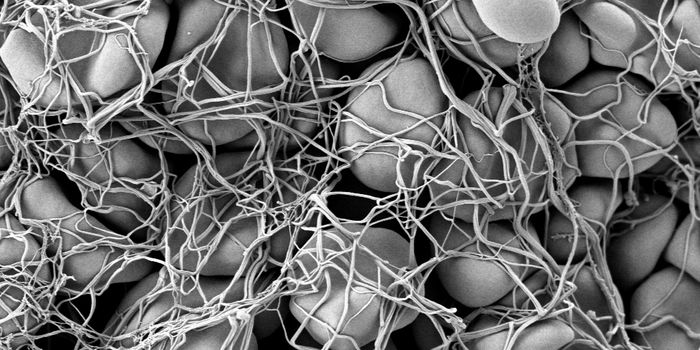Nematode Worms Can Pass Memories On to Others
If an individual can warn their group about danger, they might be able to overcome it. It seems that even a nematode worm will try to warn fellow creatures about threatening microbes like the bacterium P. aeruginosa, which can pass as a food source but will sicken the worms. Now researchers have shown that if a Caenorhabditis elegans worm encounters a P. aeruginosa pathogen, it can warn others. This work, which was reported in Cell, has also revealed some of the biological mechanisms underlying this behavior.
Previous research has shown that when P. aeruginosa sickens a C. elegans mother worm, that worm will signal to their offspring to avoid the bacterial pathogen for another four generations. If P. aeruginosa is ingested by a mother worm, their intestines also take up a bacterial RNA molecule called P11. The P11 RNA seems to stimulate germ line reproductive cells to signal to a worm neuron that's involved in behavior regulation. Changes to germ line cells pass this behavior down to future generations.
The same research group has found that adult worms can pass avoidance behavior on to other adults that didn't previously display that behavior. "We found that one worm can learn to avoid this pathogenic bacterium and if we grind up that worm, or even just use the media the worms are swimming in, and give that media or the crushed-worm lysate to naive worms, those worms now 'learn' to avoid the pathogen as well," explained senior study author Coleen Murphy, Ph.D., a Professor of Molecular Biology at Princeton University.
The Murphy lab wanted to know what signal was being passed on to other worms, which was altering their behavior. They discovered a genetic element called Cer1, which is a retrotransposon that can insert itself into DNA. When the researchers knocked down Cer1 expression in the germ line cells of worms, they stopped passing on the avoidance behavior to other adults or their offspring. Adult worms also had to have functional Cer1 to pick up the avoidance behavior.
There are even two wild strains of worms that lack Cer1, and can't teach other worms to avoid the bacterial pathogen.
Cer1 can form particles that move it to different tissues, or from one animal to another, explained Murphy.
"We think that Cer1 may give worms an advantage in their battle with pathogens, even though acquiring Cer1 in its genome can be deleterious for the worm under non-pathogenic conditions," said Murphy.
The researchers are planning to continue this research so they can learn more about the Cer1 retroelement and other aspects of this phenomenon.
Sources: Princeton University, Cell
-
APR 30, 2024Immuno-Oncology Virtual Event Series 2024
-
MAY 07, 20243rd International Biosecurity Virtual Symposium
-
JUN 06, 2024The Future of Scientific Conferencing
- See More


















































